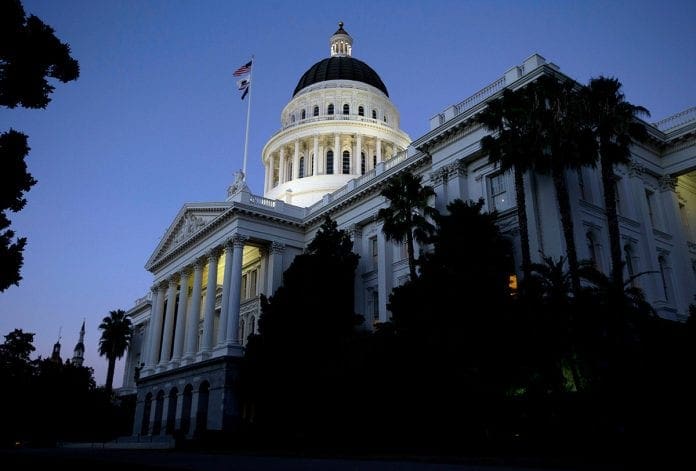California is a warm and sunny state that has very little rainfall, but the recent drought is not simply caused by average weather patterns. Instead, the key reasons that water shortages continue year on year are more complex. Primarily, the state is experiencing higher temperatures brought about by climate change, as well as the loss of groundwater and a significant reduction in the Colorado river’s volume.
A perfect storm of problems
Although the recent years of drought are notable, a lack of rain or snow is certainly not to blame. The snowpack and annual precipitation levels are not historically low and even the drought itself could be seen as a natural phenomenon in California, which has experienced periods of drought for centuries. However, the key difference now, compared to years ago, is the fact that this drought is coupled to a set of other troubling factors.
Global warming is heating up the Golden State
Heat is a key feature of life in California and while rainfall may be within normal parameters, the extremely high temperatures are not. According to the United States Environmental Protection Agency: “Southern California has warmed about three degrees (F) in the last century and all of the state is becoming warmer.” These unusually high temperatures mean water that would have previously been conserved in lakes or reservoirs is burning away.
Usable water is evaporating too quickly
This type of evaporation loss has been a concern for years and initiatives have sprung up to combat the problem. Plans like those laid out by the Cadiz Water Project aim to collect water that would otherwise evaporate and store it until required. The scheme, which was launched in response to the dire need for sustainable water, will eventually supply around 100,000 families. Without decisive action, annual precipitation levels will have little impact on the drought. Even during a time of frequent rainfall, evaporation will persist and worsen due to the extreme heat.
Aquifers are overused
The second issue relates to the state’s continued reliance on groundwater during droughts. Groundwater, harvested from underground aquifers, has often been seen as a completely sustainable resource, but the water table has fallen steadily in recent years. Along with extractions carried out to serve domestic water supplies, farmers working in the state’s agricultural industry also require copious amounts of fresh water. The combined effect on groundwater is huge and this hidden resource has at times been overused.
Far-reaching consequences
The continuous pumping out of water does not just drain the individual aquifer, it can also dry up the wells that many people in rural communities rely on. Moreover, it reduces the amount of water flowing from the aquifer into streams and rivers and can even contribute to land subsidence. Most extractions are carried out carefully and in places where it is known that the supply is recharged quickly. However, when too much water is removed, the basin cannot be fully replenished by rain, and it begins to drop permanently.
The Colorado River is under threat
Finally, it has become clear that the Colorado River is shrinking. As the river is one of the largest, if not the largest, supplier of water to the south of the state, this loss is a major concern. In previous dry periods, the Colorado has often been harnessed to serve the community and proved vital in counteracting the drought. On an average year, after serving various other states around the Colorado Basin and parts of Mexico, the river gave its most sizable share to California. Even so, there was still a surplus that the state could claim.
A reduced flow and depleted reservoirs
Since the early 2000s, things have been changing. In part, this is because the original allocation amounts for each state were worked out in the 1920s when there were no thoughts of climate change and water seemed like an endless resource. Since that time, the flow has steadily declined, and the river can no longer be seen as a permanent solution to California’s drought problem. Instead, it is experiencing a crisis of its own. The steadily warming climate is acting to evaporate the many lakes and reservoirs in the river basin, leaving a depleted flow that cannot continue to meet the needs of farmers and citizens.
Will this drought continue for decades?
In the brutal heat of a Californian summer it is easy to be anxious about the drought and to feel it will never end. Although it is certain that this time of drought will come to an end, as previous dry spells have, it should be taken as a warning. The combination of rising temperatures, higher demands for water and accelerated evaporation mean future droughts could be much worse. Taking action to cut greenhouse gases and minimize the effects of climate change for future generations is now essential.






